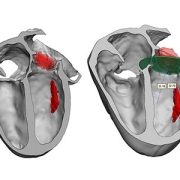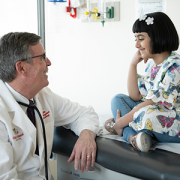Mechanically-assisted circulation for the failing Fontan

“Right now, the only way to really fix a failing Fontan is with a heart transplant, but the number of donor hearts is fixed and the number of people needing transplants has been increasing over time,” explains Murfad Peer, M.D. “So we are in a really tight spot. We need to do something, and we need to do it quickly.”
The only treatment currently available for patients born with single ventricle heart defects is the Fontan operation. And, while the operation provides excellent long-term palliation and survival, Fontan hearts eventually fail, and there are limited treatment options to help these patients make it to a heart transplant. A team led by Murfad Peer, M.D., a cardiac surgeon at Children’s National, is trying to increase the survivorship of these patients with a heart pump.
“Right now, the only way to really fix a failing Fontan is with a heart transplant, but the number of donor hearts is fixed and the number of people needing transplants has been increasing over time,” explains Dr. Peer. “Most of these Fontan patients are so sick they are not even candidates for a transplant. So we are in a really tight spot. We need to do something, and we need to do it quickly.”
Currently in the United States, more than 800 Fontan procedures are done every year. The operation involves connecting the superior and inferior vena cava directly to the pulmonary artery so that deoxygenated blood flows straight to the lungs.
“When you do a Fontan, you do a series of surgeries that basically bypass the right heart, so that blood flow to the lungs is passive — it’s going to the lungs because of venous pressure,” says Dr. Peer. “There’s no ventricle actually pumping blood directly to the lungs.”
So, while the Fontan operation has facilitated the survival of a generation of children born with congenital heart disease, it does not recreate normal circulation. And, after about 15 to 20 years, the pressure on the right side of the heart becomes so high in some patients that blood starts backing up into the veins, resulting in organ failure.
One way to keep blood flowing is by adding a pump. Dr. Peer and his team hypothesized this could be accomplished by returning circulation to the way it was before the Fontan operation, and then supporting the ventricle with a standard commercially available continuous flow ventricular assist device (VAD) that pumps blood into the lungs and the aorta.
“We took a commercially available left-ventricle assist device and split the outflow graft so that it could flow both into the systemic circulation and into the lungs,” says Dr. Peer.
The team tested their mechanically assisted single ventricle circulation (MASVC) in an animal model of functionally univentricular circulation, and they were able to sustain the animal for two hours. The results were published in January 2018, in the World Journal for Pediatric and Congenital Heart Surgery.
Going forward, the team plans on testing MASVC for longer periods of time to determine its long-term durability. Dr. Peer is also working on computer modeling MASVC in a patient using an MRI.










